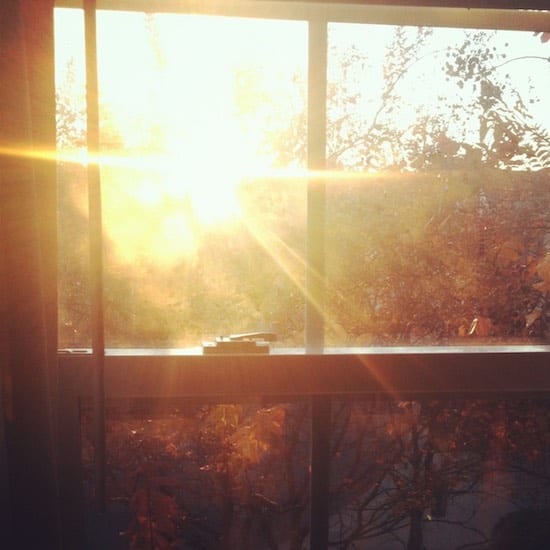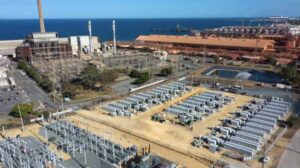The International Energy Agency has warned governments not to underestimate the key role that solar PV will play in the global energy mix of the future, as it continues on its path to becoming the cheapest source of new electricity generation in many countries around the world.
In a presentation accompanying the release of the IEA’s in-depth review of Energy Policy in Australia – commissioned last year by the Australian federal government – IEA chief Fatih Birol pointed to the plunging costs of solar PV, which have already halved, and were expected to halve again within the next 10 years.
These falling costs, coupled with the global shift to low-carbon energy sources have meant that about half of the installed power in 2017 was solar, Birol said.
And he warned that if governments that did not recognise the importance of trends like these, they would not make the right policy decisions – and may even position themselves wrongly in the global energy transition.
The warning is particularly noteworthy coming from the IEA, which itself has a solid track record for underestimating growth of solar and other renewables.
As this Nature Energy report noted last August, the IEA predicted growth rates for solar of 16-32 per cent a year between 1998 and 2010 – when, in fact, real growth ranged from 20-72 per cent with the annual average at 38 per cent. This difference caused huge under-predictions of how much solar would be installed.
Birol also stressed that governments should expect coal demand to grow much slower than in the past, as low carbon sources and natural gas meet 85 per cent of the increase in global demand. Economic powerhouses like China, he said, would lead this global trend, with their shift to a new economic model and a cleaner energy mix.
Having said this, however, Birol went on to advocate for more spending on research and development of carbon capture and storage – a technology he described as “unfortunate,” and so far moving in the wrong direction; but nonetheless an “essential” ingredient for meeting Paris climate targets.
Not surprisingly, this has been a message the conservative Murdoch press has seized upon, and the subject of a separate interview The Australian conducted with Birol.
“It is time for Australia to provide some incentives (for CCS) through the Clean Energy Finance Corporation,” Dr Birol reportedly told the paper. “There is huge potential with CCS. There has been substantial decline in costs in US and Canada … and the US is pushing through landmark CCS tax credits. It is time for Australia to provide some incentives through the Clean Energy Finance Corporation.”
But as we reported here last year, Australia has already poured hundreds of millions into CCS R&D, to little or no effect.
According to low-carbon market analyst Michael Barnard, about 200,000 tonnes of CO2 has been captured and sequestered in CCA projects for power generation at a cost of over $A1 billion since 1998 in various schemes, at a cost per tonne of about $A4,300.
“About $700 million of this was funded by the Australian government and $300 million by the industry itself, so the coal industry isn’t even paying its own portion of this failure,” Barnard wrote, adding that Australia continued to “put lipstick on the pig of CCS with its Coal21 Fund, a tiny pittance of research dollars annually intended to provide air cover for the emissions of the coal industry.”
And industry is showing very little interest in committing any more – funds or research – to the technology. AGL, which has committed to closing its Liddell coal plant in 2022, and to replace it with a mix of renewables and storage, has described new coal power generation as “univestable.”
EnergyAustralia chief Catherine Tanna has labelled coal as “a legacy technology,” and “something her grandfather might have built,” and has also said previously that the best way to reduce power prices is to ensure more renewables are brought into the market.
The company’s Latrobe valley coal generator, Yallourn, holds the mantle of Australia’s dirtiest coal plant, and is slated for closure in 2032.
And Origin Energy, owner of the Eraring power station in New South Wales, is not factoring CCS into its plans, either.
Speaking at a media briefing on Thursday as part of the gen-tailer’s results announcement, Origin CEO Frank Calabria said any new government spending on CCS R&D in Australia would have no bearing on its plans to exit coal completely by 2032.
“From our perspective, it’s about how we manage that transition (to low-carbon energy) without a high cost to customers,” Calabria said, in answer to a question based on Birol’s comments today on federal government incentives for CCS.
“Subsidies are not the right way to go forward,” he said.
Renate Egan, chair of the Australian PV Institute, who was at the IEA paper launch on Thursday, had a different take on the main message from the IEA review than that of the Murdoch papers.
“The recommendations of the report focus on an energy transition and emissions reductions targeting the design of an energy policy and climate framework and low emissions strategies,” Dr Egan said.
“Despite numerous mentions by Dr Birol of CCS and a social licence for gas extraction, the recommendations of the in-depth review fail to mention these as strategies the government should pursue,” she said,
On other matters, the report in The Australian – and a statement from the federal treasurer – also suggest that Birol and the IEA have endorsed the Turnbull government’s National Energy Guarantee.
But comments made at the paper’s launch on Thursday appeared to contradict this claim – not least of all the admission by Birol that he had not yet even seen the details of the NEG.
In further contradiction to the NEG, the IEA report includes a key recommendation for governments to “guide the energy transition through an emissions reduction goal for the power sector and provide a market signal to retire older and less efficient generation.”
The NEG does neither of these things.
To the contrary, as a recent report co-authored by CME director Bruce Mountain points out, the policy would instead protect coal generators from competition from increasingly cheap wind, solar and battery storage.
The “ultimate cost” of this inefficiency, that report warns, “will be borne by consumers in the form of higher electricity prices, in emission reductions that are more expensive and in a less secure power system.” Enter CCS.











